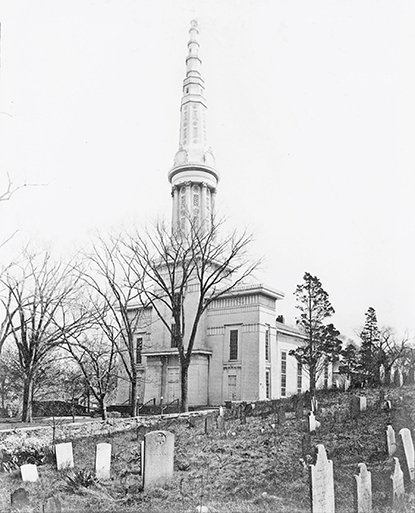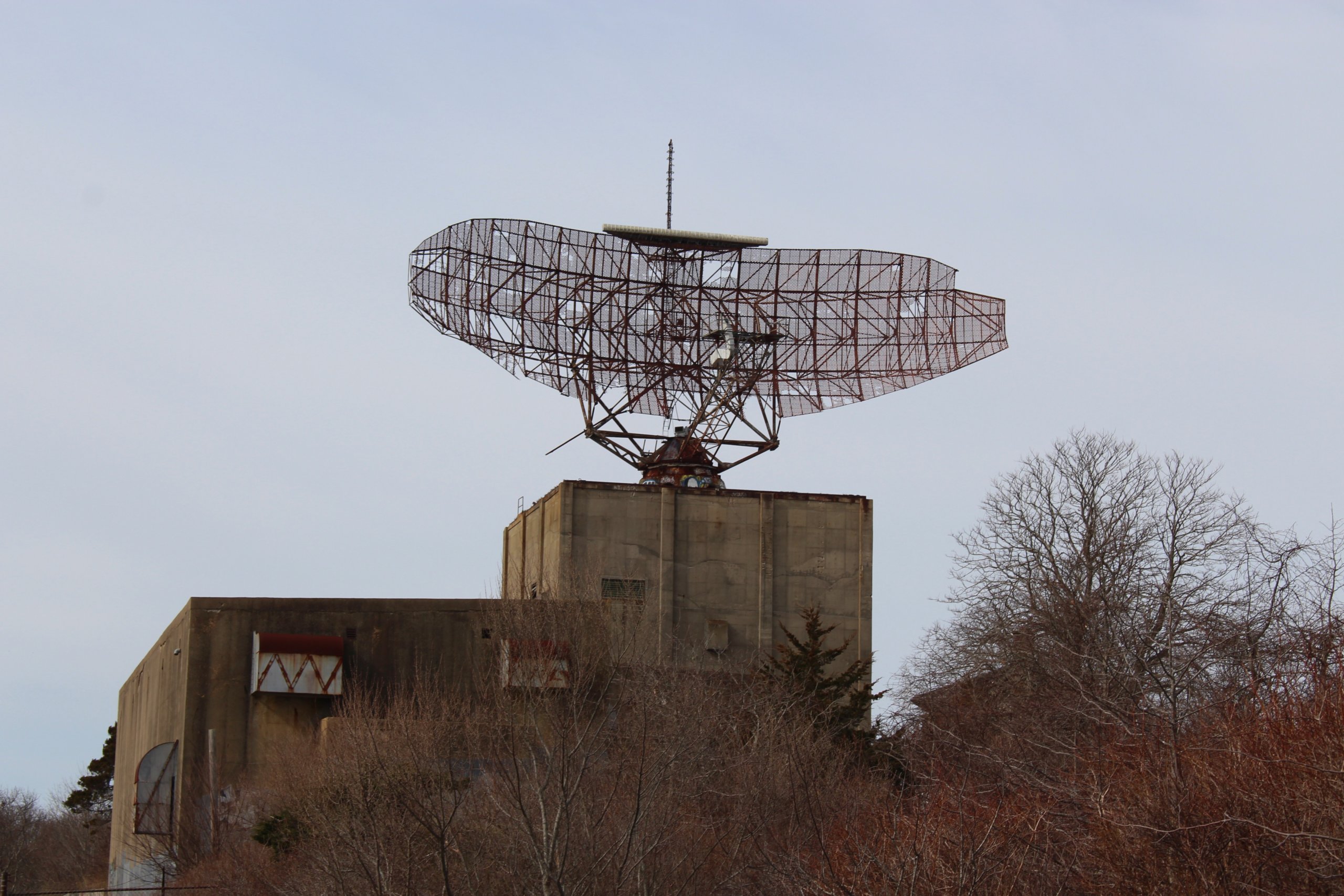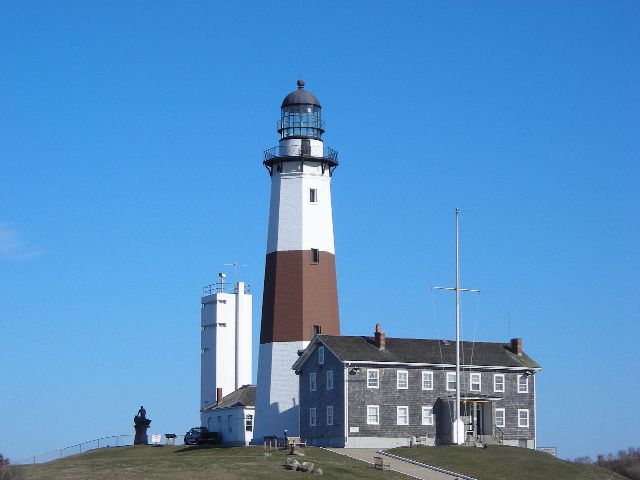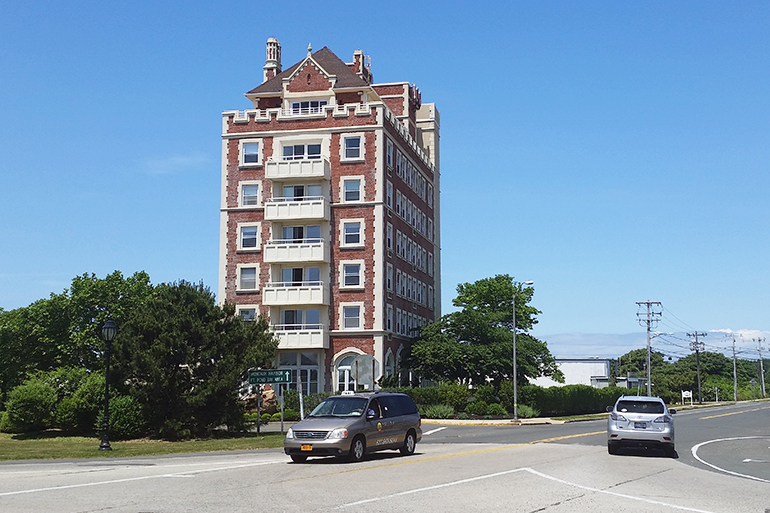Things That Stick Up in the Hamptons

Two large 61-foot-tall electronic billboards, erected two years ago, stand on each shoulder of the Sunrise Highway near the Shinnecock Canal. Underneath the Shinnecock Nation seal at the top, they advertise this and that on huge video screens. The billboards are on Shinnecock Nation property and so not governed by laws of the United States of America. The billboards also make money for the tribe. They are a pride of the tribe.
It made me think of other things that stick up into the sky here that are worth noting.

OLD WHALERS CHURCH
During the 17th and 18th centuries, our church steeples were the tallest things that stuck up. The tallest was on the Old Whalers’ Church in Sag Harbor. When it was built in 1844, its steeple rose to 185 feet. It was the tallest building on Long Island. It spoke of the grand place that was Sag Harbor, a large and busy whaling port. When I first heard about this wonderful structure, I saw that the church was there, and the platform up top upon which the steeple soared from was still there, but then that was it. I soon learned that the Great Hurricane of 1938 with its 160 mph winds (100 mph plus an unprecedented 60 mph forward motion) caused the steeple to lift off and then crash to the ground nearby. It never got rebuilt. So you have to imagine it up there.
THE MACKAY RADIO TOWER(S)
These are the tallest structures on the East End, and I have the letter “S” in parentheses because there were originally two. Built in Napeague in 1927 side by side with wires connecting them, they stood 300 feet high and played a crucial role during World War II responding to numerous SOS calls from ships at sea. One of the towers became unstable in the 1980s and had to be taken down, but the other remains, home to ospreys who have built a nest about one-quarter of the way up.

THE RADAR TOWER
Another tall structure on the East End is the 150-foot-high radar tower at Camp Hero, the former military base near the Montauk Lighthouse, which is today a huge military park. The tower can be seen from 10 miles away and, when built in 1953, was designed to alert our armed forces that Russian missiles, fired during the Cold War, were headed our way from Moscow. The missiles never came, of course, as far as I know.
THE SHINNECOCK WINDMILL
Located at the Stony Brook University Southampton campus, this old English cedar shingle windmill high on a hill was originally the tallest structure in Southampton Village, if you include the hill. Built in 1712, about the same time that 10 other nearly identical windmills were built in nearby villages, its turning blades caused wheat inside to become flour. In 1963, Long Island University built a Southampton College campus on the lower reaches of that hill, and converted the windmill to a guest house for important lecturers coming to the school. As an adjunct professor there at the time, I got to go inside and saw a modern kitchenette, a living room, and a bathroom replacing all the historic grindstones and work tables that were pulled out. I thought it was terrible. But one weekend playwright Tennessee Williams stayed there and wrote a one-act play in that living room about the death of his friend,painter Jackson Pollock.
In 2005, LIU sold the campus to Stony Brook University, which developed its own college there, but it also didn’t reach expectations. Numerous buildings on campus were declared structurally unsound and unsafe for occupancy and the windmill was one of them. Beginning last year, however, the windmill was restored and all its twinkly lights will go on again at Christmas, to preside over the season. Also, this past year, the school has begun to offer new programs in some of its other buildings.

THE MONTAUK LIGHTHOUSE
At the very tip of Long Island sits the Montauk Lighthouse, a magnificent structure rising 110 feet atop a 165-foot-tall cliff. Built in 1796 by order of President George Washington, its horn and light maintained by a lighthouse keeper have kept it going to this day.
In 1968, however, I noted in Dan’s Papers that erosion of the cliff face had cut away the edge of land upon which it sat from 185 feet from its edge to just 68 feet. After doing the mathematics I asked the U.S. Coast Guard out there how they hoped to keep the lighthouse from falling down in 1987. I was told that orders had been issued to abandon the lighthouse as an economic measure. Shocked, I asked my readers to come out to the lighthouse for aLight-In on the Saturday of Labor Day weekend at 9 p.m. carrying lights to demand that the Coast Guard reverse their order. More than 1,500 people showed up; the Coast Guard then reversed the order and an amazing woman named Giorgina Reid led volunteers out there to terrace the cliff face and save the lighthouse; it still there today.
THE GRUMMAN AIRPORT
From 1942 to 1980, an airport built in Calverton by the Grumman Aerospace Corporation hosted test flights of warplanes they built for the U.S. Navy. That airport was the tallest structure in Riverhead and though the airport closed, its buildings remain. Over the years, numerous cockeyed projects were proposed or actually opened at the property. One built (or said it built) a small private jet there which could be sold for private use. But at the celebration party when it was wheeled out, it turned out they’d secretly bought this one from a German firm and were pretending they had built it.

THE SIX STORY SKYSCRAPER
The Tower at Montauk, East Hampton’s tallest occupied building is the Skyscraper, rising six stories and 80 feet featuring a penthouse apartment at the top.
It was built there on the circle by Carl Fisher in 1927 as the first among many such skyscrapers that would turn the town into a resort city. (It never happened.)
High up in that penthouse was Fisher’s private apartment where he entertained. A massive painting of a bull sat above the headboard of his big bed there.
For many years the building was abandoned and so I climbed up the stairs. There it was.
COMMUNICATION TOWERS
Telephone companies badgered by the public tried to hide towers in church steeples out here. But efforts at the Southampton Presbyterian Church and the St. Peter’s Chapel in East Hampton failed because parishioners didn’t like having to think about the telephone service while they prayed to the Lord.









